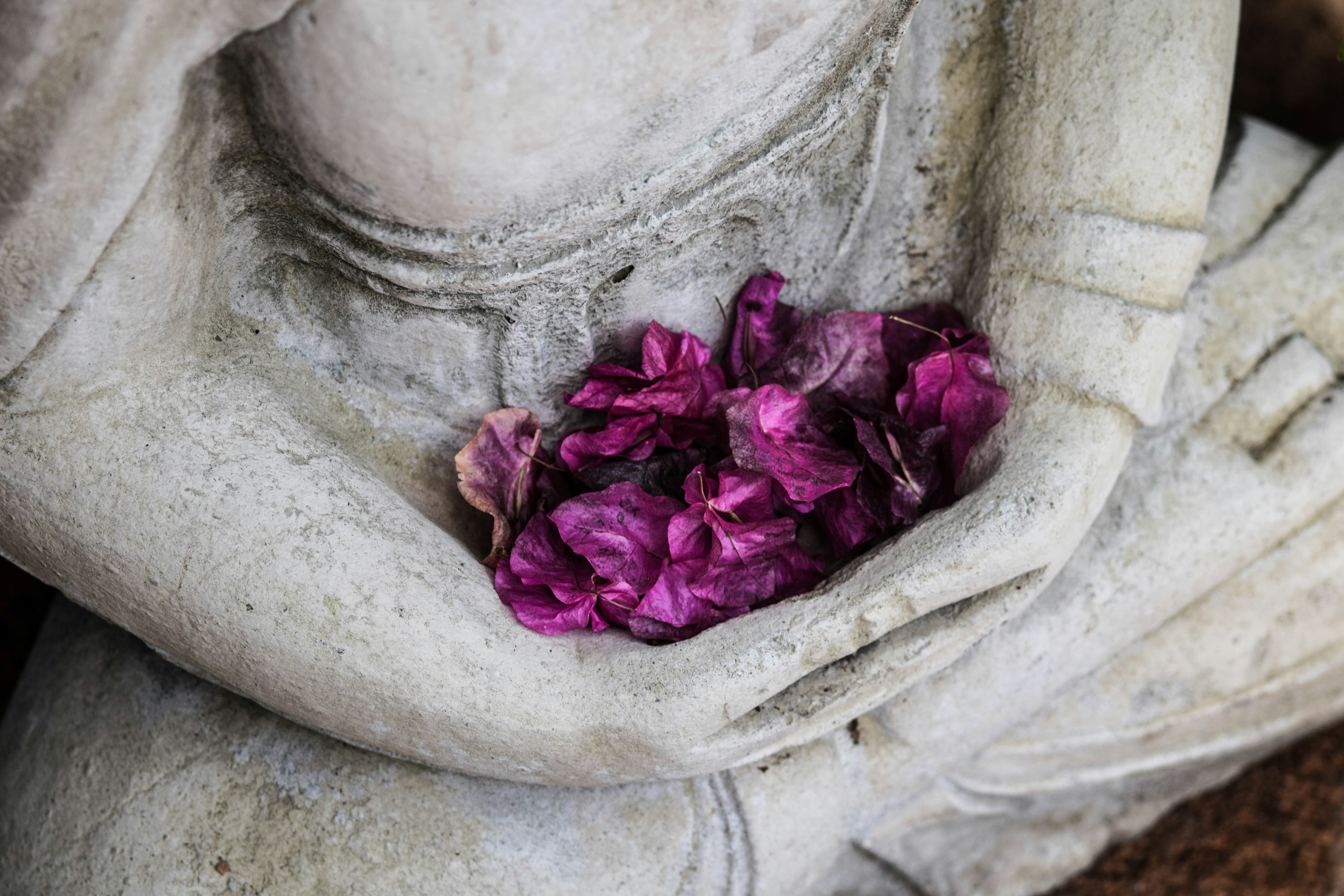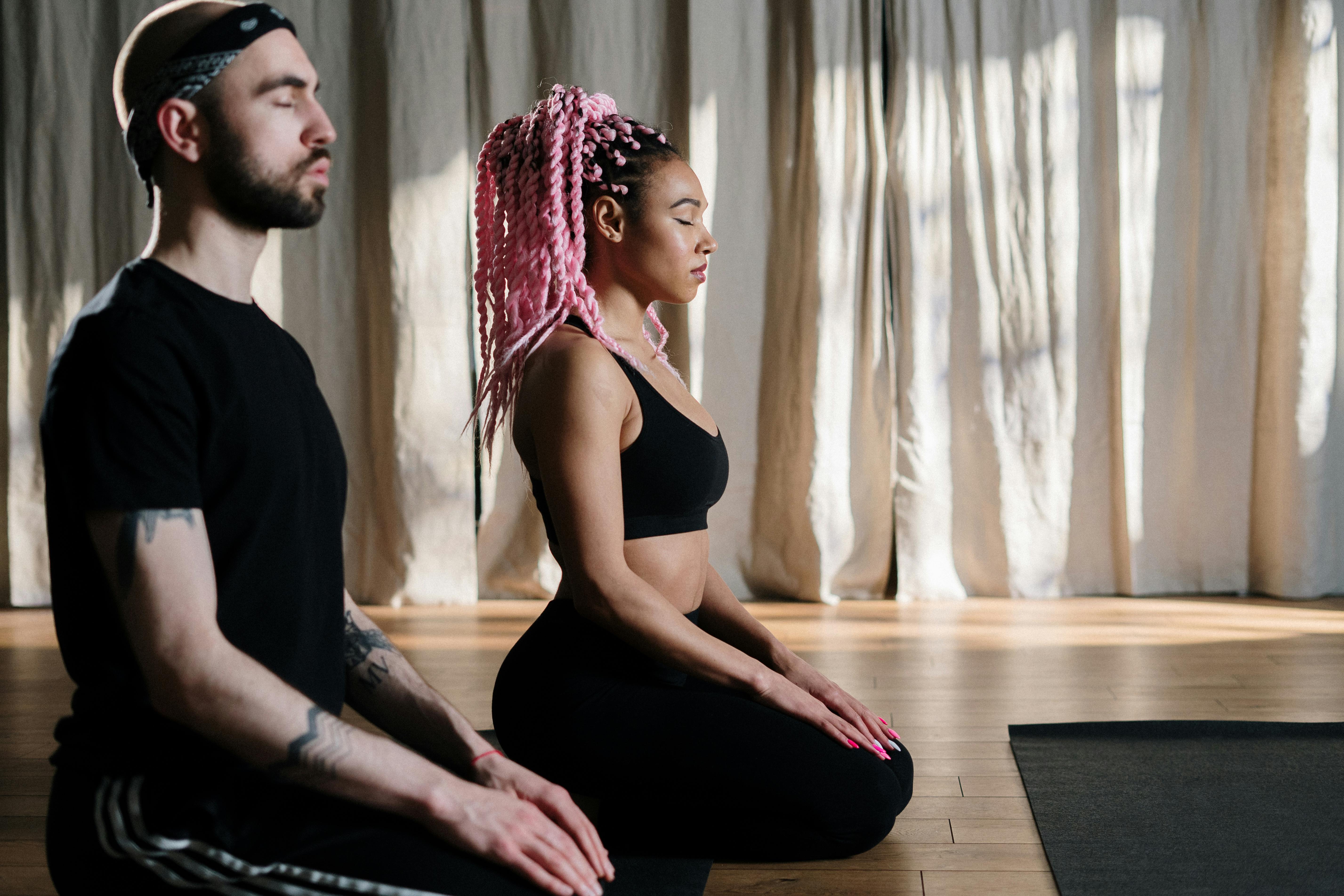Breaking a bad habit can feel overwhelming, but yoga offers a powerful, holistic approach that can make the process a little bit more manageable.
By blending physical poses, mindful breathing, and meditation, yoga helps create a foundation of awareness and resilience.
The gist of it is that through regular practice, we become more aware of our thoughts and actions, which helps us recognize and interrupt harmful patterns. When we look into the science of habits, we learn that yoga affects the brain areas involved in self-control and emotional regulation.
But can this really help us stop smoking, overeating chocolate at night, or scrolling on our phones before bed?
Before we dive in, it’s important to note that the term “bad” is subjective and can vary greatly from person to person. Here, “bad” refers to habits that you personally want to change, not something imposed by societal norms or expectations. It’s about identifying what truly nourishes and supports your well-being.
Now, let’s explore to what extent yoga can help us out.

How Habits Are Broken: 3 Powerful Strategies You Can Learn from Yoga
Breaking a habit means changing something you do automatically. And, yes, this is easier said than done because you don’t normally think about the behavior until after you’ve already done it.
For instance, I have a habit of picking my hair whenever I’m nervous or bored, which damages it. I really want to stop, but the thing is… I become aware I’m doing it only after someone tells me to stop or I notice broken hairs all over me.
So, what are the key elements missing here?
Number one: Awareness.
Self-awareness, to be exact.
Self-awareness and Yoga
Self-awareness is the ability to recognize what you’re doing while you’re doing it or even before you do it, bringing intention into your behavior.
Think of self-awareness as a mental mirror that helps you see your actions in real time.
Yoga is a powerful tool for developing this awareness. When you practice yoga, you focus on your breath and body movements, which brings your mind into the present moment. This mindfulness helps you notice your habits as they happen.
A study published in Frontiers in Psychology gives merit to this claim. The study found that yoga practitioners had significantly better self-awareness and self-regulatory abilities than non-practitioners, reflected in higher levels of interoceptive awareness and decentering abilities. This means yoga practitioners are better at recognizing their own internal states and seeing their thoughts from an outside perspective. Perseverance in yoga practice is a significant predictor of these abilities.
For example, while doing a pose, you may have noticed that you hold tension in certain muscles, such as the shoulders. Perhaps you’ve also noticed that with regular practice, you become better at releasing that tension and not clutching your shoulders.
This same awareness can help you catch yourself in the act of a bad habit, like hair-picking. It gives you an opportunity to consciously make a decision to stop and do something else.

Being Present in the Moment
Yoga also teaches us to be present, which is the second element to breaking a habit.
When you’re fully present in the moment, you’re more likely to notice your habitual actions before they unfold.
In yoga, the simple act of focusing on your breath can train your mind to stay in the moment, making it easier to spot and change unwanted behaviors.
Introspection and Yoga
The third element that helps us spot and change bad habits is introspection.
Introspection is looking inward to understand your thoughts and feelings. In other words, it can give you an insight into what drives your bad habits, the triggers that could make you relapse, and the deeper issues you need to work on to avoid compensating with bad habits.
People often say, “I don’t have the energy to create and sustain healthy habits. It takes too much of me.”
Well, breaking a habit is a mentally laborious process. It requires a lot of time and effort. However, figuring out where you waste energy can help you conserve it better and channel it towards the things you want to achieve.
Yoga, as a holistic discipline, encourages the introspective study of the self through practices like meditation and self-reflection.
Try David’s guided meditation, which will help you bring your attention inward and focus.

Other Options to Help You Break a Habit
Replacement
Sometimes, it’s easiest to break a habit by replacing it with a new, healthier habit.
In psychology and mental health, this is known as the replacement theory. It’s the idea that replacing a bad habit with a good one is much easier than just trying to eliminate the bad habit, which leaves you in a kind of vacuum.
This approach works because habits form neural pathways in the brain. Instead of trying to erase these already-created pathways, it’s more effective to use them for something else.
For instance, if stress makes you bite your nails, you can condition yourself to take a 2-minute break to do a breathing exercise whenever you feel stressed or have the urge to bite your nails.
Now, to succeed in turning this newly introduced replacement behavior into a habit, you’ll also need to repeat it frequently, reward yourself when you do it right, ask for help when you feel like you can’t make it, and be patient with yourself.
Repetition and Consistency
Regular practice is key.
Try one of the DoYogaWithMe’s courses designed to help you return to a healthy routine.
Whenever the trigger occurs, consciously choose the new behavior. At first, this requires a lot of effort and mindfulness. Over time, as you consistently replace the old habit with the new one, your brain starts to associate the established neural pathways with the new behavior, which then becomes more automatic.
Positive Reinforcement
Positive reinforcement can help solidify the new habit. Reward yourself for successfully choosing the new behavior. This could be something small like acknowledging your success or giving yourself a little treat.
The only stipulation is that your reward has to feel good and be something that you truly enjoy – just don’t indulge in it frequently.
When you use positive reinforcement, you create a positive feedback loop. Each success, no matter how small, builds your confidence and strengthens your commitment to breaking the bad habit.

Support
Don’t be afraid to ask for help. Friends, family, or a kind and caring yoga community can provide support and encouragement.
Breaking habits is one of the most difficult things to do, as we’re essentially trying to rewire our own brains. So, don’t try to do it all alone. Share your thoughts and concerns with the wider community. Not only can others give you the emotional reinforcement to keep going, but they may also share tips and tricks that will help you pull through.
Patience and Compassion
Finally, be patient and kind to yourself. Understand that slip-ups are part of the process, so don’t get discouraged.
Celebrate small victories along the way, and remember, breaking a habit takes time.
Best Yoga Practices to Help You Break a Habit
Yoga is a broad concept that encompasses many different practices, including meditation, mindfulness exercises, breathing techniques, physical exercises, spiritual practices, and so on.
Let’s see which of these practices have the biggest impact when it comes to breaking habits.
Mindfulness Practices
Mindfulness in yoga refers to the set of practices that teach you awareness and consciousness. These practices involve paying close attention to the present moment without judgment.
Another one is meditation. It helps calm the mind, reduce stress, and improve self-awareness.
To make your regular yoga practice more mindful, focus on your breathing, the sensations in your body, and the rhythm of your movements. While you might not think it makes a difference outside the mat, this practice increases your readiness to recognize when you’re about to engage in habitual behavior.

Physical Release
Last but not least, sometimes a simple asana practice can be a cathartic experience that helps you release tension and the pressing need to engage with a bad habit.
On top of that, physical activities like yoga can often serve as healthy replacements for harmful habits. For instance, if you tend to engage in a bad habit when stressed, practicing a vigorous yoga sequence can provide a constructive outlet for that energy, which makes it easier to manage cravings and impulses.

Starting Is Always the Hardest Step
Breaking a habit is no easy task, but yoga offers a gentle approach to making it happen.
By working on mindfulness and meditation, allowing yourself to release tensions through physical exercise, and relying on our engaged community, you’ll develop the self-awareness and resilience needed to overcome even the toughest habits.
So, if you’re ready to give it a try, use some of our guided meditations and prepare your mind and body for a powerful transformation.
Remember, yoga teaches you to be present in the moment and to understand yourself better. As you practice, you’ll start to notice your triggers and find healthier ways to cope with stress and anxiety.
However, change takes time, so be patient and compassionate with yourself. Celebrate the small victories and keep moving forward.
You’ve got this!











